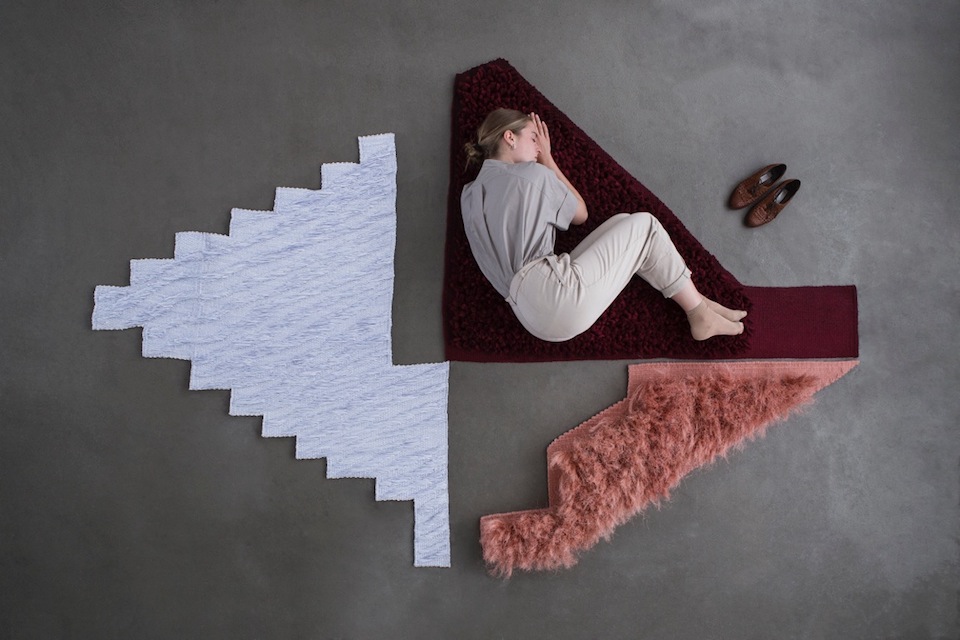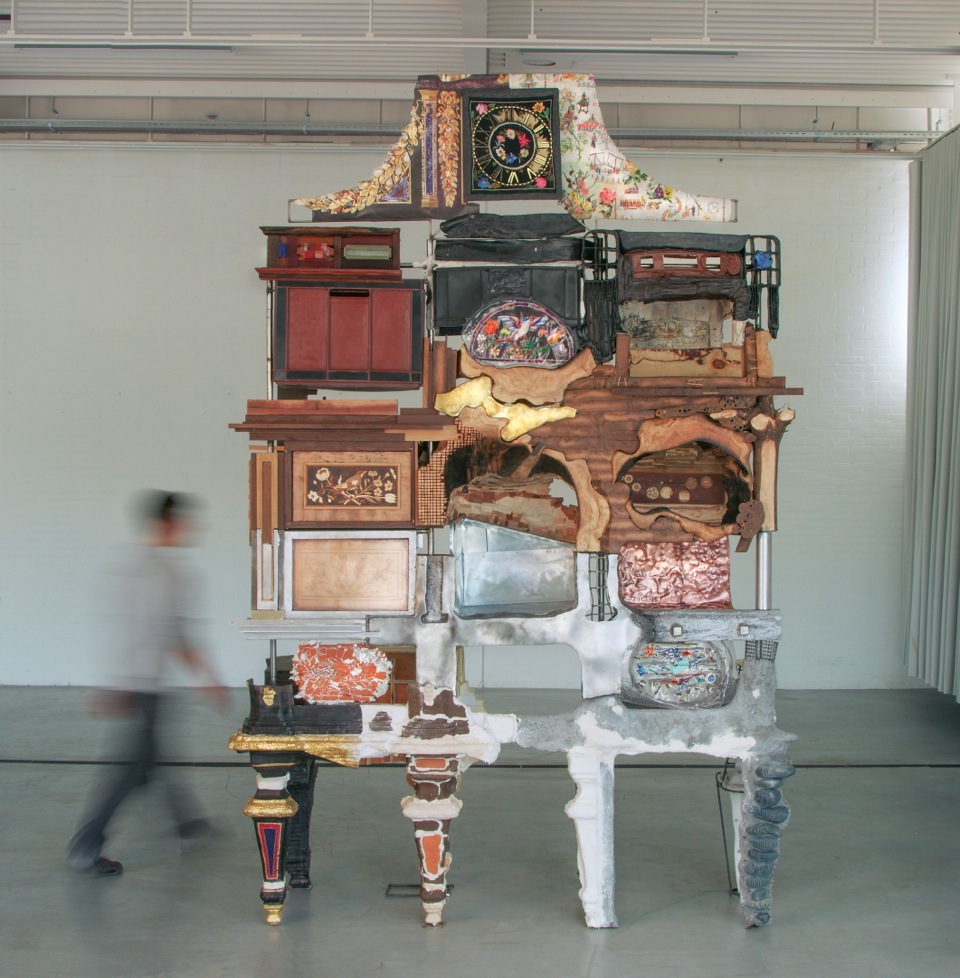POST FOSSIL
an interview with lidewij about the graduate(s)
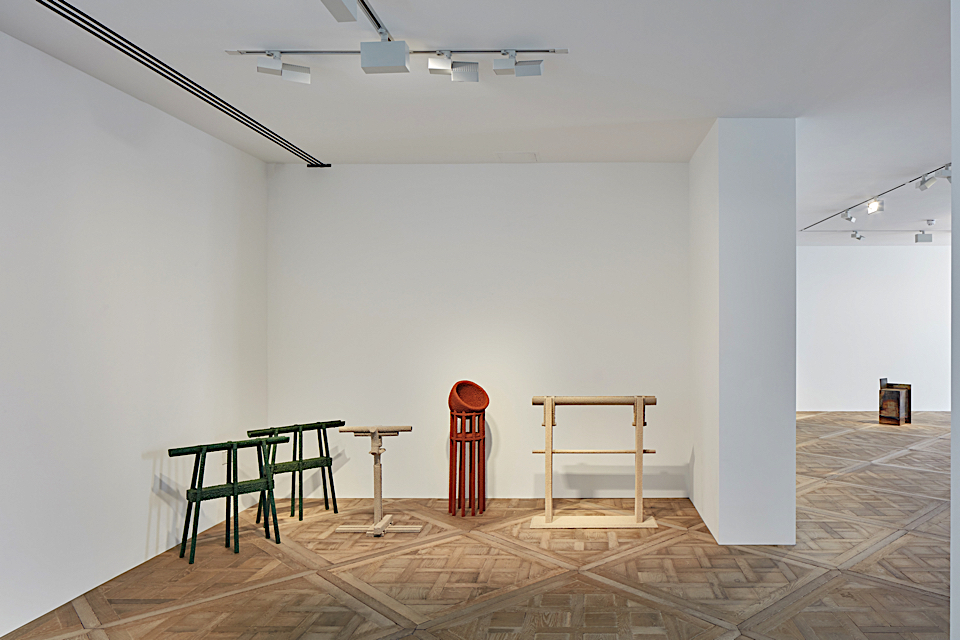
Ways of Altering (2016) by Thomas Ballouhey (Design Academy Eindhoven)
Curated by Lidewij Edelkoort for Carpenters Workshop Gallery in London, THE GRADUATE(S) brings together 15 young designers from Europe’s best schools. Here, Adrian Madlener from DL Magazine interviews Lidewij about the show.
Having mounted many shows of a similar nature in the past, what was the initial spark that inspired you to curate a survey of emerging European talents this time around? What has changed in your practice and the world around us that will make this showcase stand alone from the others?
I try to foster the talents of young designers, creating exhibitions with my curatorial partner Philip Fimmano, centred on what will happen in design next. Our selection for Carpenters Workshop Gallery is rooted in our belief that archaeology and fragmentation are leading principles for young creative people today. Material research is the most exciting component of this process, at times literally excavated. We baptised this design movement as Post-Fossil (a title we used for a first exhibition at Tokyo’s 21_21 DESIGN SIGHT in 2010). However, these most recent graduate designers live at a time when the world and their futures exist in disarray, a geo-political landscape in shambles that is governed by fear, terrorism, bigotry, inequality and a loss of faith in politics and the economy. Young designers try to make sense of this mess by creating contemporary archaic forms; simply conscious of ecology and overconsumption. They provide us with the arts and crafts we need to project an alternative future.
Though you are now creating a textile masters program at Parsons in New York, what drew you back to looking at Europe? What can student designers from Belgium, Denmark, the Netherlands, Switzerland, and the United Kingdom teach the rest of the world? Why have these countries remained important bastions of the design zeitgeist?
While I live in New York half of the year, the majority of my work is still connected to Europe and the design industry there, which continues to fuel the most innovative design ideas, pushing culture forward. This is for a large part because Europe has excellent conceptual art and design institutions, which are the birthplace of fresh creativity and taking risks. These are societies that have a tradition of alternative thinking, linked both to craft and industrial production; one could say that there’s a little more design in their DNA. With the exception of Switzerland (!) these countries are all quite flat so maybe it’s the permanent presence of an imposing horizon (= perspective) that allows creative people to keep a more open mind.
In 1985, Andrea Branzi coined the idea of Domestic Animals as being a series of objects that combine globalized technological advancements with revived vernacularity; reinterpreted craft traditions specific to different locales. How are today's recent design graduates exploring the concept of archaeology by drawing from the past to shape the future?
There is definitely a very primal aspect to a lot of these design disciplines. This is perhaps best encapsulated in Aurelie Hoegy’s wild Dancers, which are chairs that merge animal and human, supple fibres with hard matter, fusing object with performance. In the aftermath of the longest financial crisis in decades, a period of streamlined design for design’s sake has come to an end. Society is getting ready to break free of its materialistic past by replacing it with the materialisation of modest earth-bound and often recomposed materials. In this process, young designers formulate objects around sustainable ingredients, favouring timber, hide, pulp, fibre, earth and fire. Like contemporary cavemen, they reinvent shelter, redesign tools and manmade machines, and conceptualise archaic rituals for a more modest lifestyle.
What materials, forms, textures and colours make up the language you're identifying in this exhibition?
The Graduate(s) features works by fifteen designers made from a variety of both poor and precious natural materials. Martin Laforet has wired LEDs to a rough slab of concrete to create a beautiful lamp. Thomas Ballouhey coats found ingredients with sand to envision rudimentary porous furniture for the future. Carlo Lorenzetti forges earthen recipients for water and botanicals, ritualistic tools for a new kind of well-being. Crackling clay grows over the polished marble and granite assemblages by Priyanka Sharma. Steel is rendered in varying oxidised patinas by Anton Henrik Denys.
The translucency of cow intestines is lit up in a chandelier by Kathrine Barbro Bendixen, recalling the emotional vocabulary of Eva Hesse. And textiles take on tactile dimensions in sensorial rugs by Sofie Genz, woven in wool, paper and sisal. These objects are all tinted in natural shades ranging from brown and beige to red ochres and bronze. An accumulation of shapes and materials brings some brightness in a spectacular cabinet-collage by Kostas Lambridis.
Why is it important that the exhibited projects reflect a sense of impulse and experimentation, expressed through the primal rawness and roughness of new material generation, collage; resourcefulness; reconsideration, and reconfiguration?
Material is the message in today’s design world, with designers looking at both low and high tech ways to reinvent the elements with which they work, all the while staying connected to nature and sustainability. Many of the objects are highly process-based, illustrating the making as a sign of authenticity and transparent honesty. Designers often recompose scraps of matter or blend both natural and synthetic ingredients, creating material hybrids. Recycling and reincarnation comes naturally to young people today; giving objects a new life, adding texture and colour along the way.
How can sublime, universal, monolithic, and sculptural forms be understood as functional objects or as means to influence a reorientation of what design means? How can speculative projects change our perception of how we consume and use objects or tools?
Autonomous design mirrors contemporary culture and has the power to ignite new ideas for the design industry at large. For example, over the past twenty years, the movement of creating uniqueness within a range of objects has now become a central asset to many serial product collections; production technology finally catches up. Whether these objects are functional is of less importance since they are considered material expressions, aesthetic objects or three-dimensional forms. They experiment with process and technology, challenge shape and structure, honour the presence of the maker and act as vectors for the important issues of the day. The brut nature of many of the objects in The Graduate(s) indicates a shift by a young generation concerned with making and consuming less, towards a mindful and spiritual future.
What is your relationship with Carpenters Workshop Gallery? Have you collaborated in the past?
When contributing an essay to a forthcoming book by Rizzoli about Carpenters Workshop Gallery, I realised just how much we share a similar discerning eye. I am also very proud to see many Design Academy Eindhoven alumni in their roster of artists. We are collaborating with Carpenters because, like us, they’re not afraid to take a risk in order to support tomorrow's creative talent. The gallery has given us carte blanche to show some quite directional projects, some of which are outside Carpenters' usual comfort zone. We all hope to introduce these graduates to an international audience during London Design Week; from the press to collectors and the design world at large.
THE GRADUATE(S)
EUROPEAN DESIGN TALENT SELECTED BY LIDEWIJ EDELKOORT
September 4 – September 23, 2017
Monday to Friday 10 AM to 6 PM + open Saturdays September 16 and 23, 2017
Cocktail reception: Monday, September 18 from 6:30-8:30 PM
Carpenters Workshop Gallery
4 Albemarle Street
London W1S 4GA
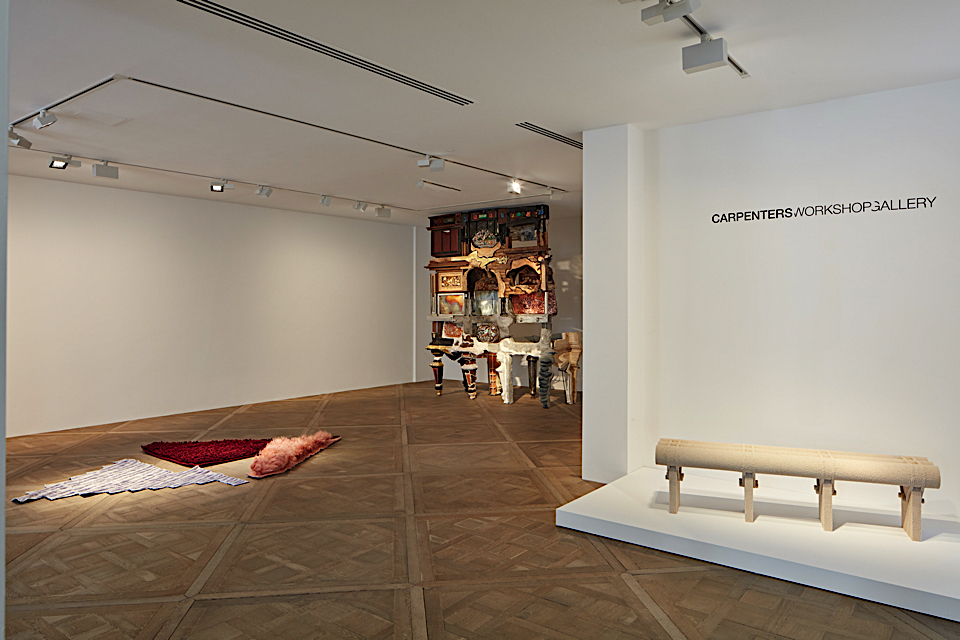
Touch (2016) by Sophie Genz (Royal Danish Academy of Fine Arts), The Elemental Cabinet (in progress 2017) by Kostas Lambridis (Design Academy Eindhoven) & Ways of Altering Bench (2016) by Thomas Ballouhey (Design Academy Eindhoven
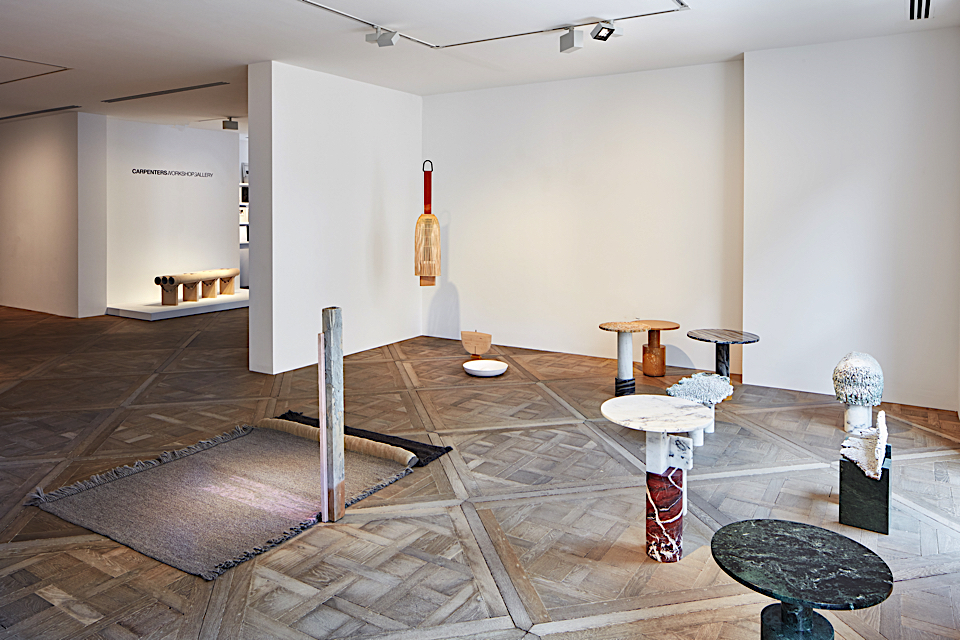
A Small Revolt (2016) by Bram van Breda (LUCA School of Arts, Ghent), Raw Essence (2014) by Julie de Mol (Design Academy Eindhoven) & tables (2016-17) by Priyanka Sharma (Royal College of Art) & Dushyant Bansal
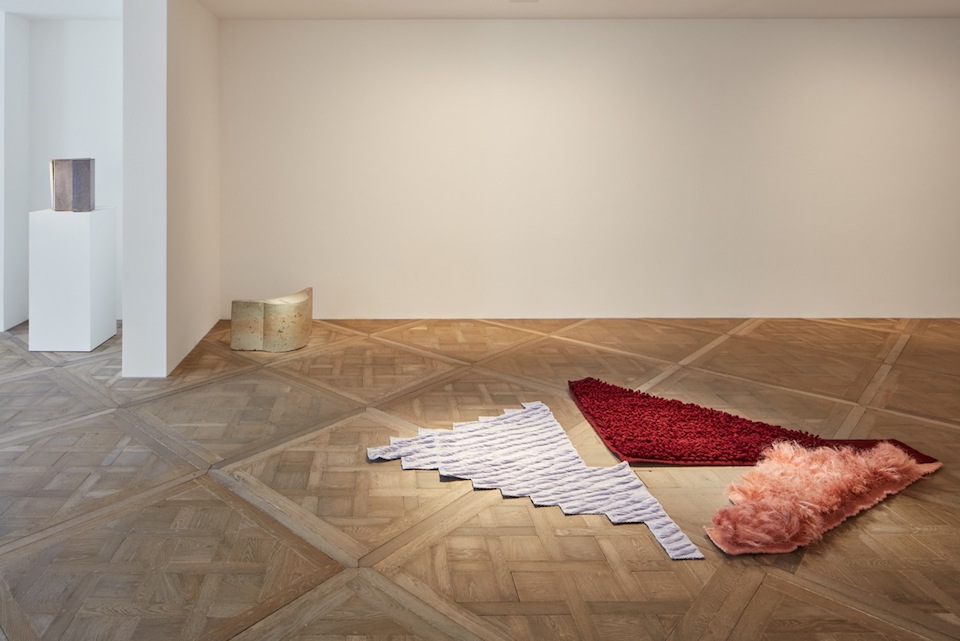
Extruded Expressions (2016) by Bram Vanderbeke (Design Academy Eindhoven) & Touch (2016) by Sophie Genz (Royal Danish Academy of Fine Arts)
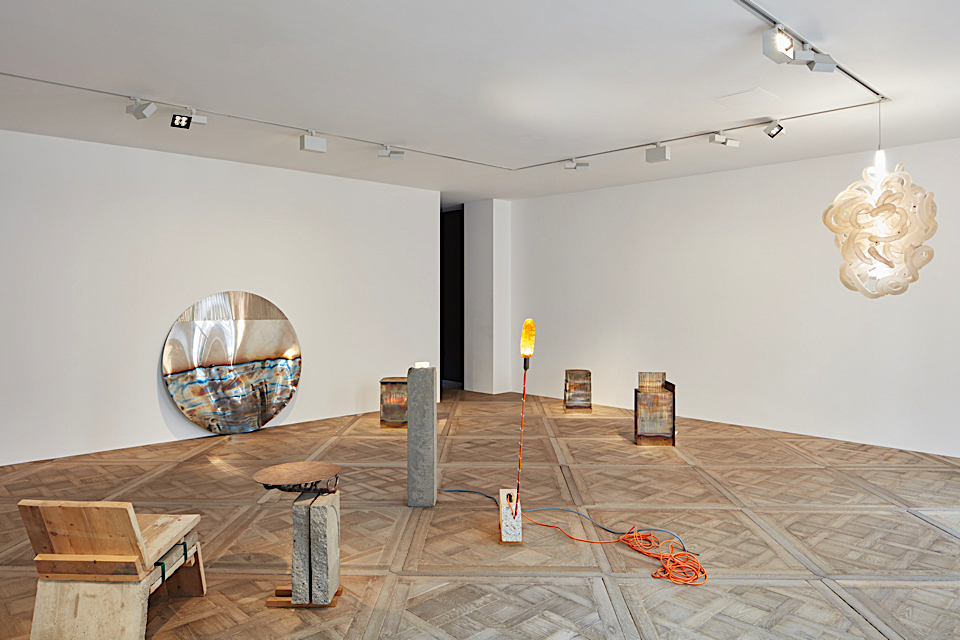
The Transition of Mould (2015) by Martin Laforet (Design Academy Eindhoven) & Inside Out (2016) by Kathrine Barbro Bendixen (Design Academy Eindhoven)
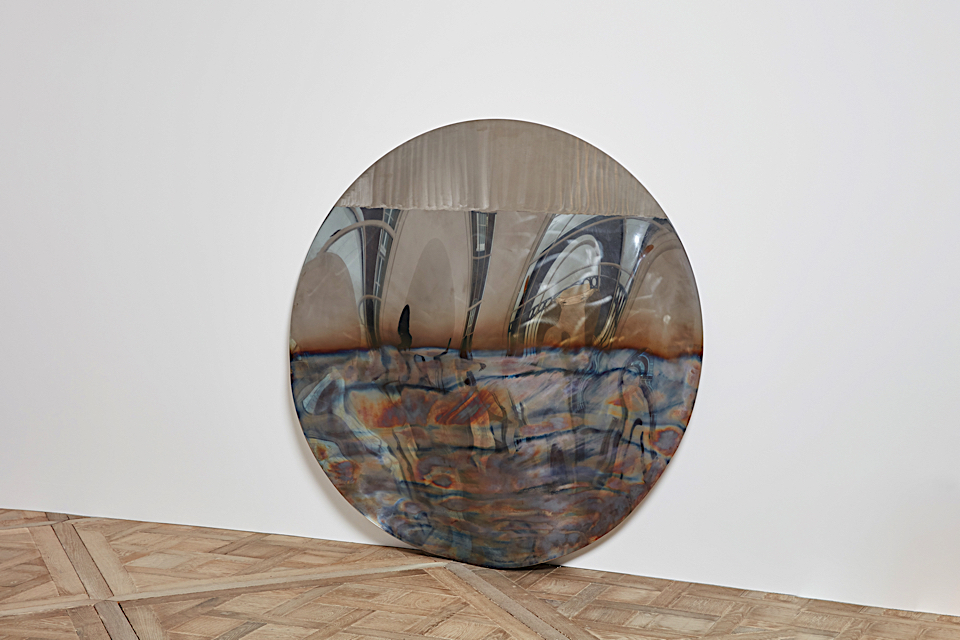
SelfReflect 1.0 (2016) by Anton Henrik Denyse (Design Academy Eindhoven)
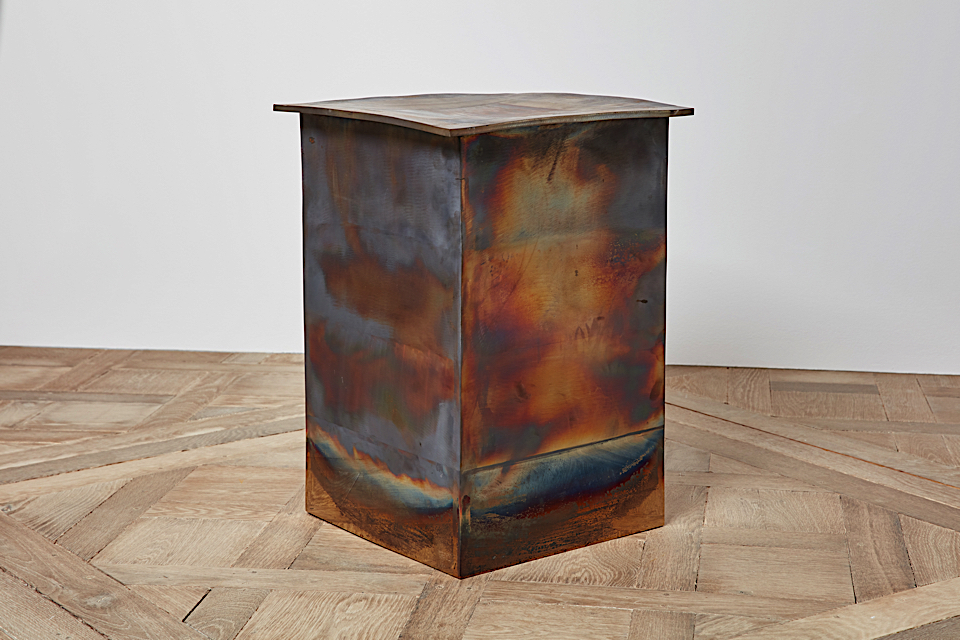
steel stool (2016) by Anton Henrik Denyse (Design Academy Eindhoven
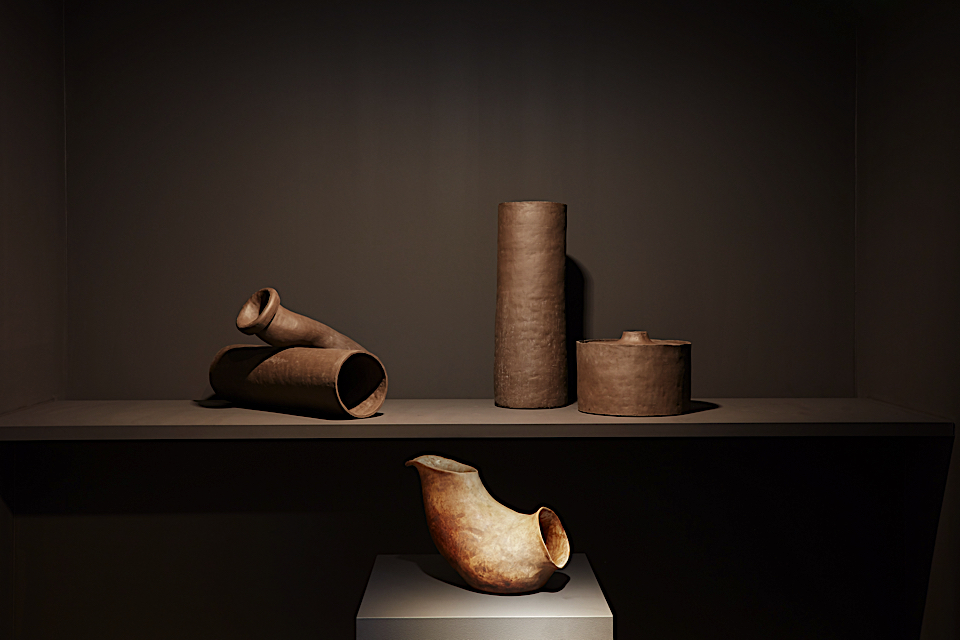
Omnipotence of Thought (2016) by Carlo Lorenzetti (Design Academy Eindhoven)
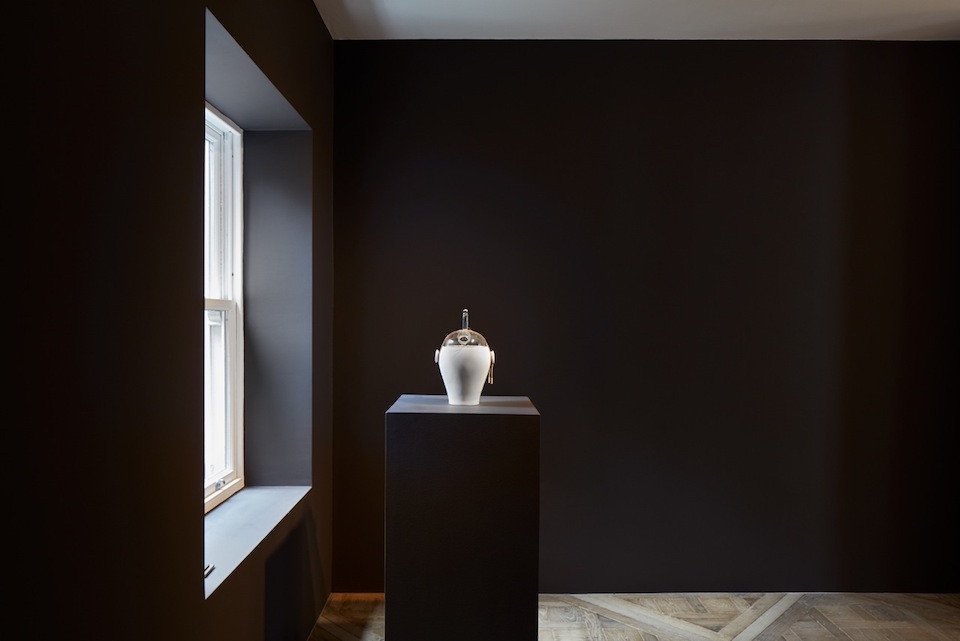
Gargoulette (2016) by Dach & Zephir (Ecole Nationale Supérieure des Arts Décoratifs)
the graduate(s)
Carpenters Workshop Gallery is pleased to announce THE GRADUATE(S), its collaboration with design curator Lidewij Edelkoort to highlight young talent gathered from Europe’s best design schools. The gallery’s London space, in the heart of the Mayfair Design District, is offering a platform to graduates as a steppingstone to promoting and producing their work.
As a renowned trend forecaster, Edelkoort has a proven record of finding creative talent that reflects the zeitgeist. She has surveyed the work of recent graduates from more than 50 academies to formulate a final selection that defines a new organic design language, observing how, “A fresh generation of designers are investigating their identity and their roots – sometimes literally going back in history to uncover authenticity and primal instincts. They create hybrids between technology and touch, innovating materials, forging form and conceptualizing rituals for a more humble lifestyle fit for our ever-evolving times.”
The exhibition will unveil works from 14 design talents from ECAL (Switzerland), Royal College of Art (United Kingdom), École National Supérieure des Arts Décoratifs (France), Royal Danish Design Academy (Denmark), LUCA School of Arts (Belgium), and Design Academy Eindhoven (the Netherlands).
As Edelkoort explains, “A new form of archaeology emerges. Students catalogue this experience by creating new artefacts, remnants for living that are arranged as still lives. A true sense of exploring classic of ancient beauty, rendered in quick gestures and abstract patterns, sporadically using colour in hushed harmonies. Furniture is therefore coated to look like stone, a post-fossil idea dreamt up for tomorrow’s Fred Flintstone. Amphorae resemble historical vestiges while bronze is cast into miniature monuments, decorating homes, composing collections and providing spiritual depth for the future.”
THE GRADUATE(S) features works by fifteen designers, made from a variety of both poor and precious natural materials. Among them, Martin Laforet has wired LEDs to a rough slab of concrete to create a beautiful lamp. Thomas Ballouhey coats found ingredients with sand to envision porous rudimentary furniture for the interior. Carlo Lorenzetti forges earthen recipients for water and botanicals, ritualistic tools for a new kind of well-being.
Crackling clay grows over the polished marble and granite assemblages by Priyanka Sharma. Steel is rendered in varying oxidised patinas by Anton Henrik Denys. The translucency of cow intestines is lit up in a chandelier by Kathrine Barbro Bendixen, recalling the emotional vocabulary of Eva Hesse. And textiles take on highly tactile dimensions in sensorial woven rugs by Sofie Genz. These objects are all tinted in natural shades ranging from brown and beige to red ochres and bronze. Yet an accumulation of shapes and materials brings some brightness, a spectacular cabinet-collage by Kostas Lambridis.
A digital catalogue will be available through the gallery in early September. For further information, interview requests and full image selection available for press, kindly contact Carla Colón & Andrey Furmanovich at cwg@nadinejohnson.com or on +1 212 228 5555.
This special exhibition is part of London Design Week. A cocktail reception with Lidewij Edelkoort and the designers will take place on Monday, September 18 from 6:30-8:30 PM.
THE GRADUATE(S)
EUROPEAN DESIGN TALENT SELECTED BY LIDEWIJ EDELKOORT
Monday, September 4 – Saturday, September 23, 2017
Monday to Friday 10 AM to 6 PM
Additionally open Saturday, September
Carpenters Workshop Gallery
4 Albemarle Street
London W1S 4GA
download the press release
Introduction
Time has come for extreme change.
Society is ready to break away from last century for good. To break with creative conventions, theoretic rules and stigmas that now are questioned, challenged and broken. To break with a materialistic mentality replacing it with the materialisation of modest earth-bound and recomposed matter.
In the aftermath of the worst financial crisis in decades, a period of glamorous and streamlined design for design’s sake comes to an end.
A new generation of designers retrace their roots, refine their earth and research their history, sometimes going back to the beginning of time. In this process, they form and formulate design around exactly these natural and sustainable materials, favouring timber, hide, pulp, fibre, earth and fire; like contemporary cavemen, they reinvent shelter, redesign tools and manmade machines, and conceptualise archaic rituals for a more modest, contented and contained lifestyle. Like a Fred Flintstone of tomorrow.
The animal world will keep invading and transforming the life of humans represented in a more abstract and less narrative manner.
Skins and furs are becoming dominant materials animated by organic form and skeleton structures.
Our relation to all living organisms is at stake.
Therefore humans will share and care for each other.
Soon the world will discover that we are all family.
Ecology and sustainability will no longer be enough.
Primitive matter and organic shapes will embody a need of man longing for a more meaningful and ritualistic relationship with earth and the elements.
Resulting in a revival of animism.
Therefore designers create brut and raw shapes that resemble totemic termite mounds, honeycomb shapes, spider web laces and timber structures; at times incorporating biotechnology into the making process
to inspire design systems for the future.

Bone structures give quality to pre-historic dwellings and millennial designs imitating the organic process of growth. Hand-blown glass and hand-thrown pottery will dominate the table of the future, presenting even slower food with forgotten vegetables and local and seasonal produce.
Chairs are wobbly on their legs and lamps are overing in the air.
Pebbles are scattered in space, landscaping the world
of interior.
Nature is a dominant ingredient in this movement, although no longer used in a naïve and aspiring ecological language, but as a mature philosophy fit
for a newer age. Raising the questions that need to be raised.
Can we do with less to become more?
Can design have a soul and therefore be animated?
Can man find a more meaningful way to consume?
Can we break with the past and reinvent the future?
In general, materials will be matte and humble, however the earth and its hidden riches also invites this generation to employ minerals, alloys and crystals; adding lustre and sometimes even sheen to these fossil-like concepts and constructions. At times these designs will echo the essence of the arte povera movement which is bound to make a revival – soon.
ATELIER VAN LIESTHOUT
Family Lamp, 2007
courtesy Carpenters Workshop Gallery, London
Transcending the contemporary art, design and architecture disciplines, Atelier Van Lieshout was founded by Joep van Lieshout, an artist based in Rotterdam whose work speaks through ironic humor, at times as dark as the black silhouettes he makes, yet all the while celebrating everyday life. A recent series of body-shaped sculptures that function as objects included this lamp, materializing a family of form in archaic style and permitting an element of what he describes as the “absence of design”.
JOCHEM DE WIT
Raw Tableware, 2009
The contemporary designer embraces the use of multiple materials as diverse as recomposed concrete, recycled glass and bioplastic. Presented in fundamental shapes, these newly-reclaimed materials have age-old patinas akin to archaeological finds from a distant culture.
LONNY VAN RYSWYCK
Drawn from Clay, 2006
A frosted yellow cup from Brunssum, a shiny dark brown from Woerden, a rough terra cotta from Gilze-Rijen… A stunning variety of ethnic local color is derived by sampling the soil of various parts of the Netherlands to explore important contemporary notions of origin and identity.
ARIK LEVY
Rock Fusion (Medium), 2007
That the rock would become such a keystone symbol of the landscaping movement in design could not have been imagined by Arik Levy, whose faceted nuggets are the most iconic. Suitable as stools or simply as sculptures, these reflective boulders come in mirrored metallic finishes to elevate the interior garden.
CHEN CHUN HAO 陳俊豪
A Trigger for Imagination, 2006
This table’s creation shows a combination of formal western surrealism and Asian crafts techniques and materials, bridging the two cultures into one being and previewing a “bio-logical” time when designers will aspire to grow form from nature.
JULIA LOHMANN
Belinda, Els & Sigga, 2005
By incorporating the narrative shape of a cow into iconic benches, the designer reminds us not to forget the living being behind the material used. Embedding lively characteristics into conventionally inanimate objects (they even have their own passports!), Julia Lohmann remarkably illustrates that in the future, design will have soul.
MAX LAMB
Bronze Poly Chair, 2007
Using an interesting technique that Max Lamb refers to as “lost foam” (akin to the lost wax technique traditionally used in casting metal objects), each of these sheep-like chairs are individually sculpted in polystyrene before being “slaughtered” in molten bronze that is poured into their mold.
EMIEL VAN BOEKEL
Artificial Mammoth, 2009
A fictional suspended carcass that is able to reveal its inner gizzards by being turned inside out; this playful seating design connects to our archaic roots by making a humorous comparison to the carnal way man hunted in prehistoric times in order to survive.
PIEKE BERGMANS
Crystal Virus (chair, basket, table & stool), 2007
Interested in the blurred dimension at which art and design converge, when designer and industry interact, and where blown glass and furniture meet, Pieke Bergmans’ collection of viral interventions are each unique and personal. The bulbous forms of liquid glass sear the wooden surfaces on which they are infected, taking possession of the existing design and its history, and creating a new interpretation of the object that possesses a charged sense of balance.
MARIA ROOSEN
For the Strongest Man, 1985
The voluptuous proportions of Maria Roosen’s prolific oeuvre illustrate a studied journey in form. A master of glass blowing, welding and woodwork, her oversized artworks envelop the viewer in a sculptural world that is as narrative as it is impressive.
JULIEN CARRETERO
Drag (Vases & Pillar), 2009
By using the same industrial drag process that is commonly used for creating ornamental cornices, semi-circular shapes are aligned on the central axe of an apparatus to form two raw halves that are then joined. This plaster technique allows for endless variations of chunky totems to be produced in this action-packed method of making form.
MAAIKE ROOZENBURG
Vaetwerk, 2008
An alchemist’s ode to early medieval pottery. The designer wants to bring back the origin of the preparation of food to the contemporary kitchen with three basic ancient elements: the jug, the bowl and the cooking pot. Three multifunctional tools to pour, blend, cool, drink, knead and bake. These pre-industrial archetypes are simple, robust, functional and made by hand. Without words they tell through their spouts, grips and ears how they want to be used.
KARIN FRANKENSTEIN
Cow Dung Shelf & Chair, 2008
karin_frankenstein@hotmail.com
A mix of clay, sand and cow dung resurrects an ancient building material once used in primitive yet performant dwellings; its natural hardening qualities liberating this ceramic designer from the size restrictions of her kiln, to forge and expand into innovative and monumental form.
GUUS VAN LEEUWEN
Domestic Animals
(Cervus Elaphus, Vulpus Lagopus & Ovis Aries), 2008
Designers today are interested in reinventing domestic products; illustrated best in this narrative collection of animal shapes acting as radiators, and designed to remind consumers about a time when people lived above their livestock in order to profit from their animals’ heat. Comforting, their savage skins are filled with wheat in order to retain warmth when taken away to bed on a chilly night.
BOAZ COHEN & SAYAKA YAMAMOTO
Mixed Animals Polygon, 2009
This design duo are the Fred and Wilma Flintstone of contemporary design, embracing archaic mono-colored shapes, such as in these animals, to narrate stories through friendly and iconic sculptural pieces.
TANJA SAETER
Evolving II, 2010
Glass has the flexibility and sensibility of the pen and is able to give form to writing, translating human movement into abstract forms. Between graffiti and calligraphy, Tanja Saeter’s emotive body of work is inspired by the evolution of microscopic organisms. Written in fluid expressive gestures that cover the walls, their forms vary depending on the way they are layered and hung.
FERDINAND SEBASTIAAN & MALOU VERHAREN
Floating Garments, 2009
Deer, sheep and goat hide are used to create bloated sculptural garments based on “globular” silhouettes; round shapes without a beginning or end. Finished by hand-painting, these fashions are fit for a future world where cloning and biosynthesis will leave their mark and influence our culture.
ARIK LEVY
Rock Fusion (Medium), 2007
That the rock would become such a keystone symbol of the landscaping movement in design could not have been imagined by Arik Levy, whose faceted nuggets are the most iconic. Suitable as stools or simply as sculptures, these reflective boulders come in mirrored metallic finishes to elevate the interior garden.
MAARTEN BAAS
Clay Furniture
(floor fan, dining chairs, coffee table), 2010
collection of Lidewij Edelkoort, Paris
Design Miami’s Designer of the Year 2009, Maarten Baas has become an early and influential player of the Post-Fossil movement, burning his way to fame over the last decade with a series of designs called Smoke. His intuitive approach to form is once more illustrated in the Clay Furniture collection; usually produced in bright primary colors, this especially commissioned series of wobbly pieces expresses the important use of natural pigments in various arts & crafts colors giving the work an even more organic origin.
Nacho Carbonell
Evolution
(One Man Chair, The Bench & Lover’s Chair), 2008
Nacho Carbonell engages himself to recycle the paper publications that invade our lives on a daily basis; collecting them by color, blending them to pulp and transforming them into sculptural refuges in which to hide and be seen. These organic cocoons have become contemporary sanctuaries; icons of a movement towards a more archaic and abstract sense of design.
Nacho Carbonell
Hot Kettles, 2008
A bulbous kettle has been roughly molded to provide hovering irregular shapes in three materials: bronze, aluminum and porcelain.
POST FOSSIL IN HOLON
Until april 30, 2011 Post Fossil Excaving 21 st century creation is in Israel
in the beautiful Design Museum Holon built by Ron Arad.
POST FOSSIL IN TOKYO
In 21_21 DESIGN SIGHT , the building imagined by Tadeo Ando for Issey Miyake, this exhibition brings together over 130 works of 71 participants that Li Edelkoort sees as “POST FOSSIL” creators.
This collection poses the question, “How will the designers of tomorrow look to past in order to invent the future?”
As it “excavates” and analyzes new creative trends in and for the 21st century, which are embodied in materials, colors, shapes, processes, themes, images, techniques, and other elements, this exhibition searches for clues necessary for the human beings to live and define their future.
 Photo Masaya Yoshimura Art: Marijn van der Poll
Photo Masaya Yoshimura Art: Marijn van der Poll photo Masaya Yoshimura
 Photo Masaya Yoshimura Art:Pepe Heykoop-Sayaka Yamamoto-Chen Chun Hao
Photo Masaya Yoshimura Art:Pepe Heykoop-Sayaka Yamamoto-Chen Chun Hao Photo Masaya Yoshimura Art:Harm Rensink

Photo Masaya Yoshimura Art:Karin Frankensten

Photo Masaya Yoshimura Art:Dick van Hoof

Photo Masaya Yoshimura Art:Guus van Leeuwen-Lex Pott

Photo Masaya Yoshimura Art:Eric Klarenbeek

Photo Masaya Yoshimura Art:Wieki Somers
 Photo Masaya Yoshimura Art:Boaz Cohen & Sayaka Yamamoto
Photo Masaya Yoshimura Art:Boaz Cohen & Sayaka Yamamoto Photo Masaya Yoshimura Art:Kwangho Lee

Photo Masaya Yoshimura ArtJa Eruc Visser-Bless-Boaz Cohen & Sayaka Yamamoto-At Photo Masaya Yoshimura elier van Lieshout

Photo Masaya Yoshimura elier van Lieshout ArtArik Levy-studio Job-studio Glithero-Moa Long
 Photo Masaya Yoshimura Art:Pepe Heykoop-Sayaka Yamamoto-Chen Chun Hao
Photo Masaya Yoshimura Art:Pepe Heykoop-Sayaka Yamamoto-Chen Chun Hao Photo Masaya Yoshimura Art:Harm Rensink
William Cobbing
William Cobbing is an artist living and working in London. Starting from a sculptural sensibility his artwork encompasses a diverse range of media, including video, installation and performance.
In the artworks, people are often depicted as being fused with the surrounding architecture, or buried under layers of clay or concrete, from which they absurdly struggle to extricate themselves.
Thomas Thwaites
«I'm Thomas Thwaites and I'm trying to build a toaster, from scratch - beginning by mining the raw materials and ending with a product that Argos sells for only £3.99. A toaster.
After some research I have determined that I will need the following materials to make a toaster. Copper, to make the pins of the electric plug, the cord, and internal wires. Iron to make the steel grilling apparatus, and the spring to pop up the toast.
Nickel to make the heating element. Mica (a mineral a bit like slate) around which the heating element is wound, and of course plastic for the plug and cord insulation, and for the all important sleek looking casing. The first four of these materials are dug out of the ground, and plastic is derived from oil, which is generally sucked up through a hole....»


